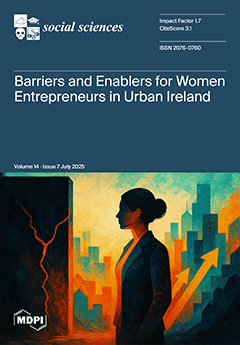Open AccessArticle
What Are the Statistics That Improve Education?
by
Marta Soler-Gallart, Dragana Avramov, Nancy Zoidou Saripapa, Karol Melgarejo, Cristian González López, María Troya Porras, Alba Pistón-Pozo, Esther Oliver, Mimar Ramis-Salas, Javier Díez-Palomar and Garazi Lopez de Aguileta
Viewed by 1630
Abstract
There is much research on national and international statistical sources on analyses and trends of educational inequalities, which allow for a descriptive and analytical overview of a population’s educational status and trends—such as attainment levels, dropout rates, and sociodemographic variables. There is also
[...] Read more.
There is much research on national and international statistical sources on analyses and trends of educational inequalities, which allow for a descriptive and analytical overview of a population’s educational status and trends—such as attainment levels, dropout rates, and sociodemographic variables. There is also research that has identified successful interventions across different countries that contribute to overcoming and reversing educational inequalities. However, the research on whether and how national and international statistical sources provide analyses on how to overcome and reverse educational inequalities remains underexplored. This article contributes to filling this gap by critically examining the available national and international statistical sources used in the educational field to analyze whether and how they include the necessary information for assessing the impact of specific educational interventions that overcome inequalities. Drawing on longitudinal and cohort studies within the European project REVERS-ED, the article highlights the need to move towards research models that incorporate explanatory variables and identify which interventions most effectively improve learning outcomes. Findings show that, despite widespread recognition of successful interventions, their impact is rarely reflected in official statistical systems, thereby limiting access to crucial information for teachers, policymakers, and educational institutions. Unlike disciplines such as medicine, education lacks systematic monitoring of the effects of successful interventions, making it difficult to establish clear correlations between them and learning outcomes. This paper advocates for greater accessibility to evaluative data and a shift towards applied, collaborative research that responds to the real needs of citizens, contributing to a more equitable, inclusive, and effective education system.
Full article
►▼
Show Figures





